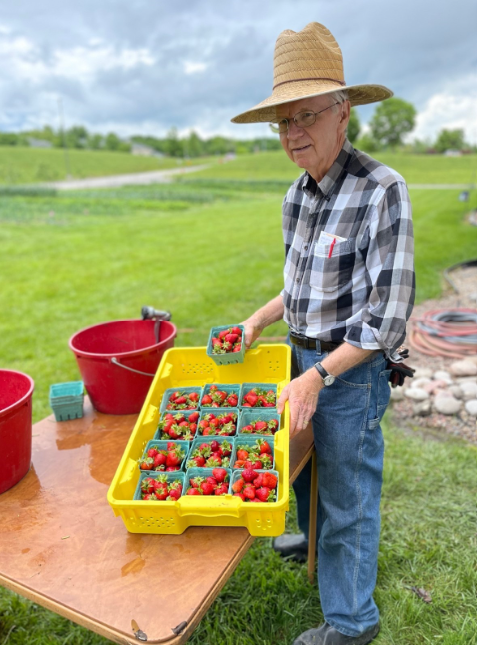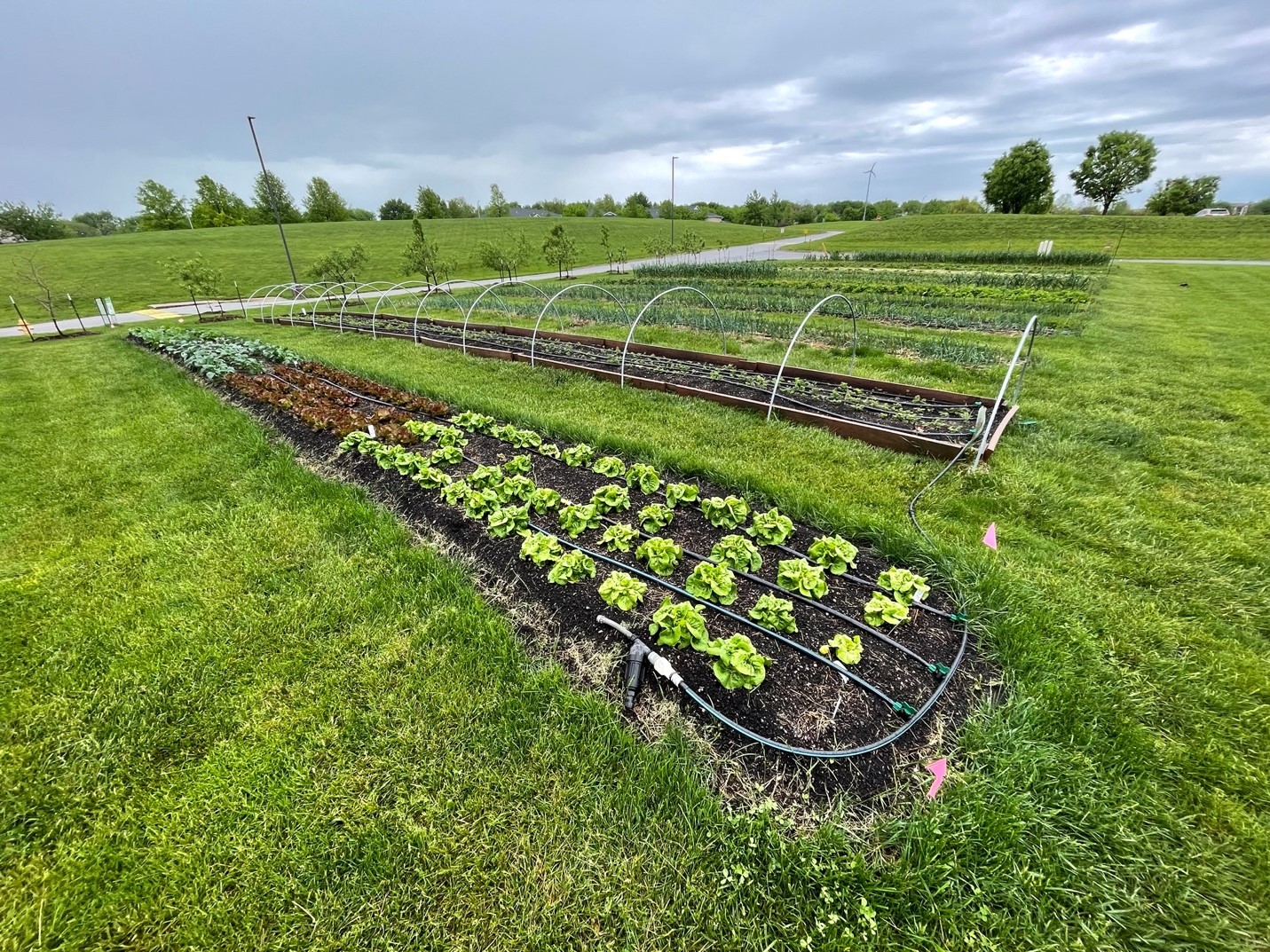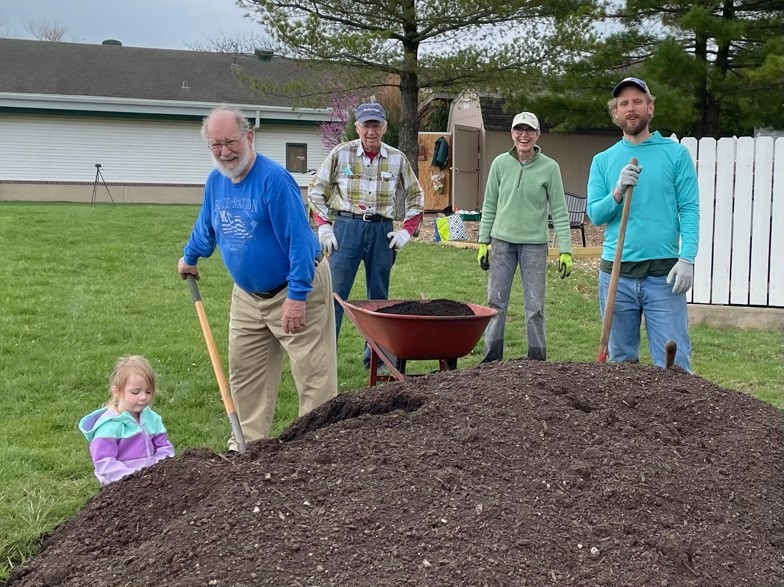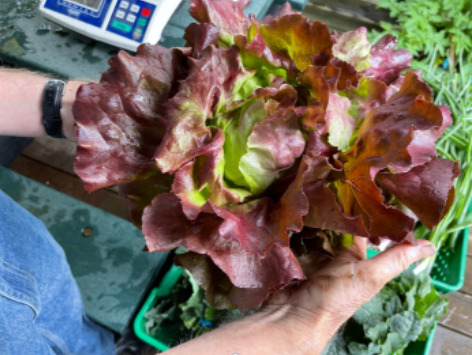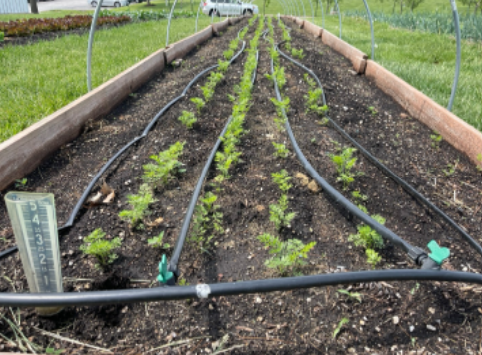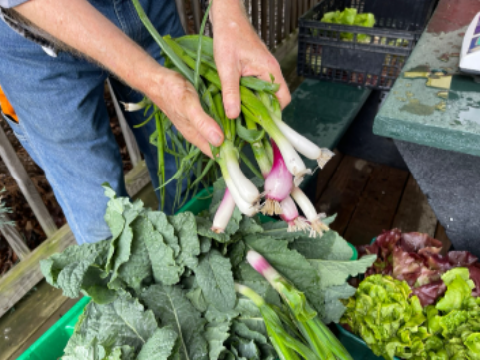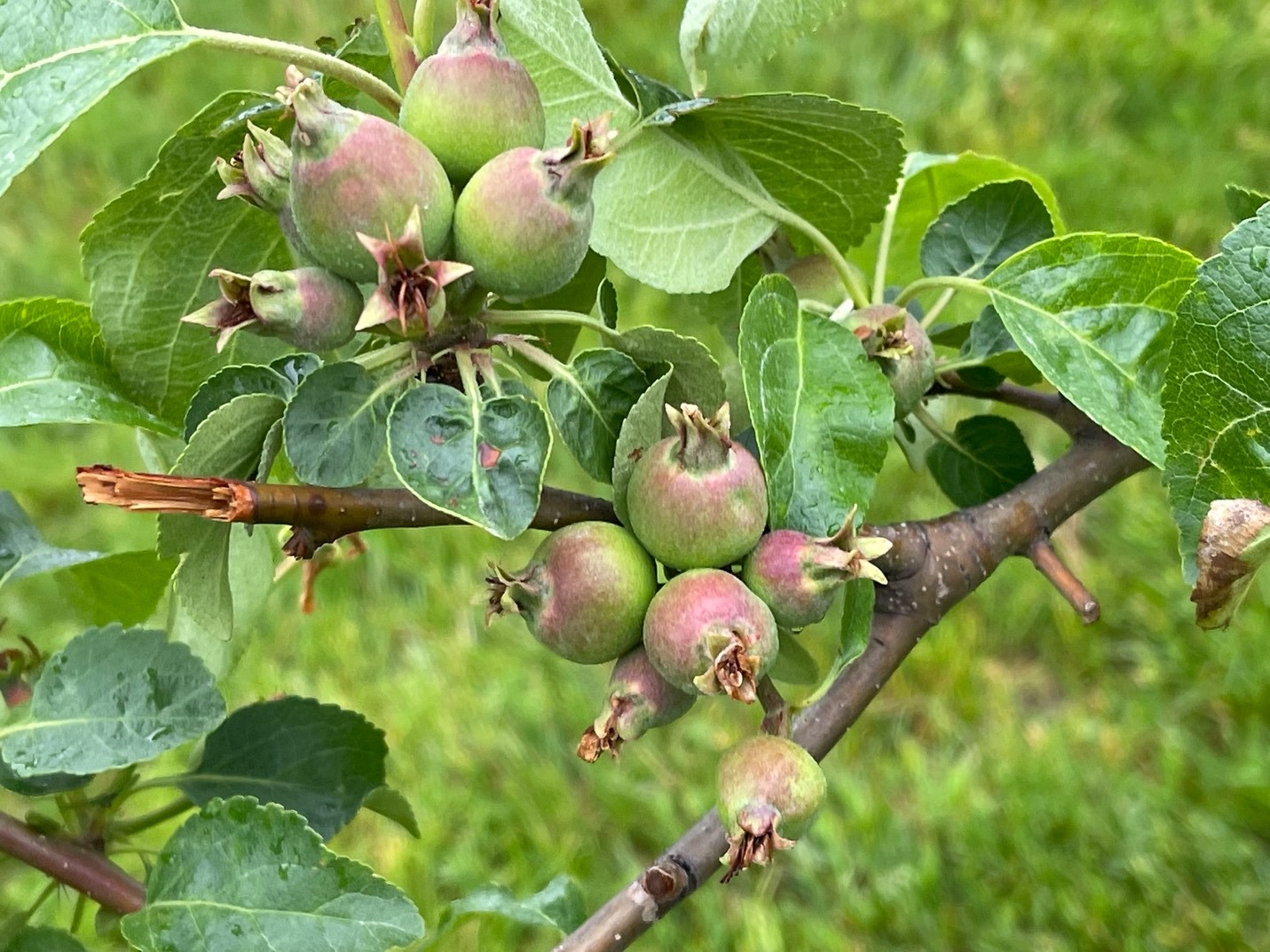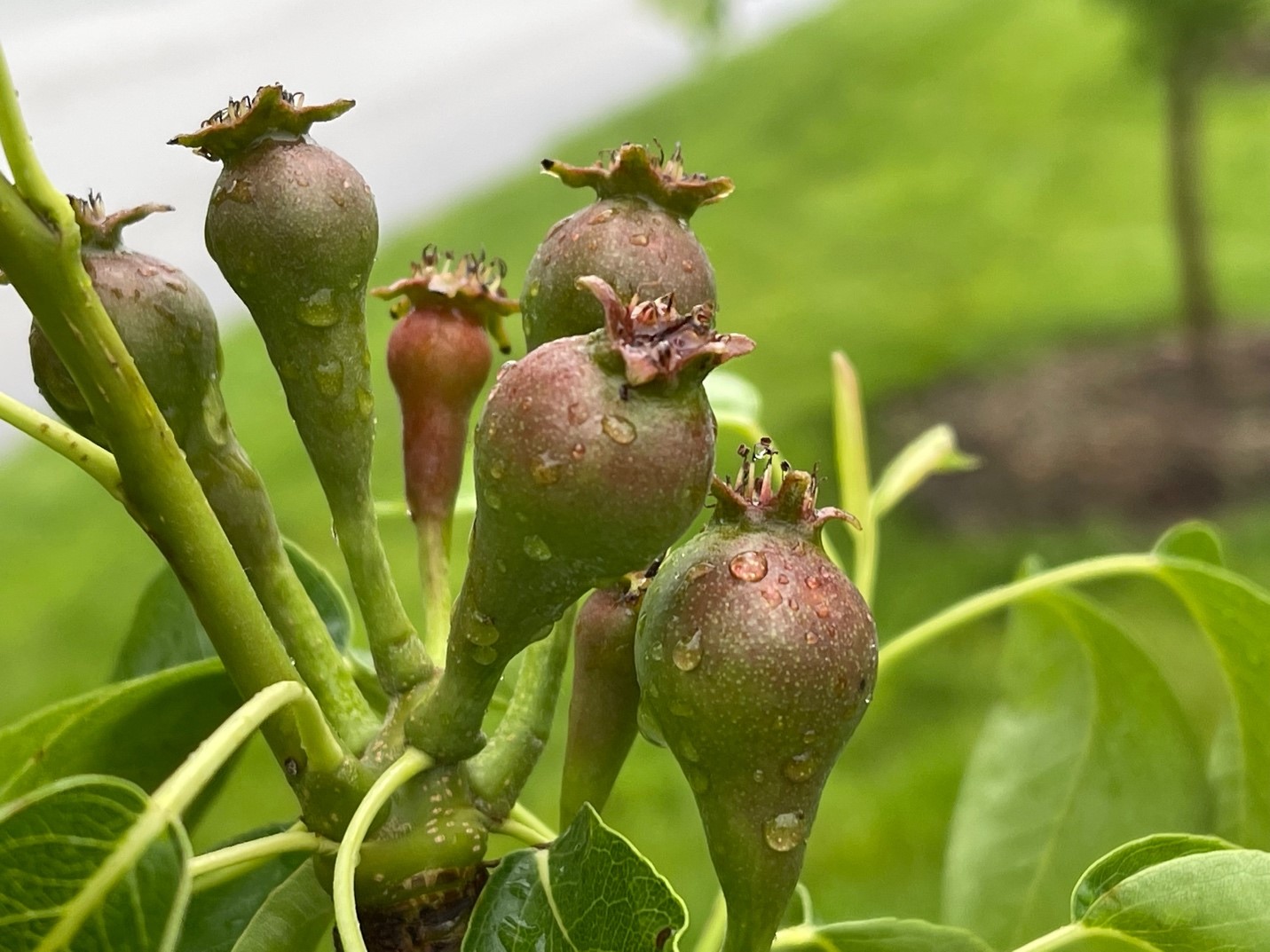What's Growing in the Garden
by Zac Hoppenstedt
Johnson County Horticulture AgentContent for this gardening recap comes firsthand from observation and experience of K-State Extension agents and volunteers who oversee the WIC Community Garden, the ¼ acre urban farm space focused on fruit and vegetable production located at the Johnson County Extension office. The WIC Garden is one part trial and teaching grounds for urban agriculture and one part community resource for food access and fresh produce donation to those in need. Read more about the garden and volunteer opportunities at: https://www.johnson.k-state.edu/lawn-garde n/wic-community-garden/index.html
Welcome to this second edition of our “What’s Growing in the Garden” recap. It’s late spring and many of the cool-season plantings from March and April are maturing and ready for Harvest—including this first bumper crop of strawberries this year. It has been uniquely wet and cold compared to our average, with a few 90+ degree days sprinkled in just to keep us on our toes but so far the crops have weathered the conditions and the garden looks healthy and full.
NO-TILL RAISED BED
We added a new permanent raised bed to the garden this month on the most western edge near our tool shed. Following the addition of our blackberry bed in the fall of 2020, the garden had been at 13 rows total and there were several gardeners who thought it was too ominous a number and best that we add another bed.
Trialing the no-till technique being adopted by small farms and gardens locally. We bypassed use of our tiller to break up the turf and instead cut the sod to the lowest setting on our mower, manually opened pores in the soil using 12” broadfork tines and smothered the designated planting space with at least 6 inches of compost 5 ft wide by 60 ft long—thanks to City of Olathe for over 10 cubic yards of compost!
Previous experience fighting heavy compacted soils in the garden led us to experiment with this more passive method of transitioning sod to new growing space. We transplanted shallow rooting crops like lettuce and cabbage almost immediately into the space and made sure to set up drip irrigation,because much like a traditional raised bed that is filled with soil mix, this bed will dry out quickly compared to beds that are more integrated with in-ground soil.So far, so good—wejust harvested40 pounds of red and green butterhead lettuce and 7 pounds of lacinato kale from the bed right before the holiday weekend.
Thinning Plants and Excess Fruit
Lots of moisture and warming temperatures has definitely led to significant growth of spring fruit and veg. An abundance germinating plants and/or fruit on trees may seem like a good thing, but crowding will lead to poor growth and disease issues and should be actively managed this time of year with thinning.
On the vegetable side we don’t direct seed many spring crops outside of root vegetables, e.g. carrots, beets and radishes. Nonetheless those direct seeded crops with their miniature size seeds make accurate spacing very difficult. Especially with carrots, we hope to adopt a push seeder for planting in the future but still seed by hand primarily. It’s not uncommon to have 100 carrot seeds spill out and germinate in 5 feet of row. That means extra time consuming work of thinning plants by hand.
When trying to figure out correct spacing, we like to think about the mature width of the plant at harvest and ascribe a number of fingers between each plant for our gardeners to aim for, i.e. two fingers of space between each carrot plant or 4 fingers between each beet or onion. Gardener to gardener not all sets of fingers are standardized but it’s usually close enough.
With onions weintentionally space plantstightin the late winter (~2 inches between).Thinningout this crop provides an abundance ofgreen and spring onions for a removal experience with no waste but rather bounty. The remaining onion plants, are left in ground spaced 4-6 inches and have enough room to produce a large bulb for harvest in the summer. We’ve harvested over 100 lbs of green/spring onions from just 2 beds this year for donation.
With fruit thinning we are mostly concerned with our tree fruit plantings, e.g. apple, pear and peaches. Cherries, blackberries and established strawberry plantings are not thinned and can produce a full fruit load. However, when all the fertilizedfruitlets on our trees are just left to mature it can limit fruit bud development over the summer for next year’s crop and often leaves growers with biennial fruiting pattern—too much fruit one year and bare the next.Likewise excess fruit will lead to limb breakage and smaller fruit size.
We try to thin trees before fruit diameter is much larger than a dime. This also helps with our organic pest spray coverage, when the trees are thinned properly insect pests have less pockets where they canhide and carry out their life cycle.
With apples, pears and peaches we shoot for 6 to 8 inches apart (at minimum a hand width apart).These treesproduce flowers and fruit in clusters, we usually remove all the fruit in a cluster but one—leave the largest, nicest fruit in the cluster. This is true for more pome and stone fruit except apricots with can tolerate a tighter spacing 2-4 inches.
Okay! That’s a snap shot of what going on in the garden here. At the time of writing we’re going into what looks to be a warm Memorial Day weekend. I’m sure we’ll be harvesting garlic scapes and bulbs in the next few weeks—read our article on best practices for garlic harvest and curing.
